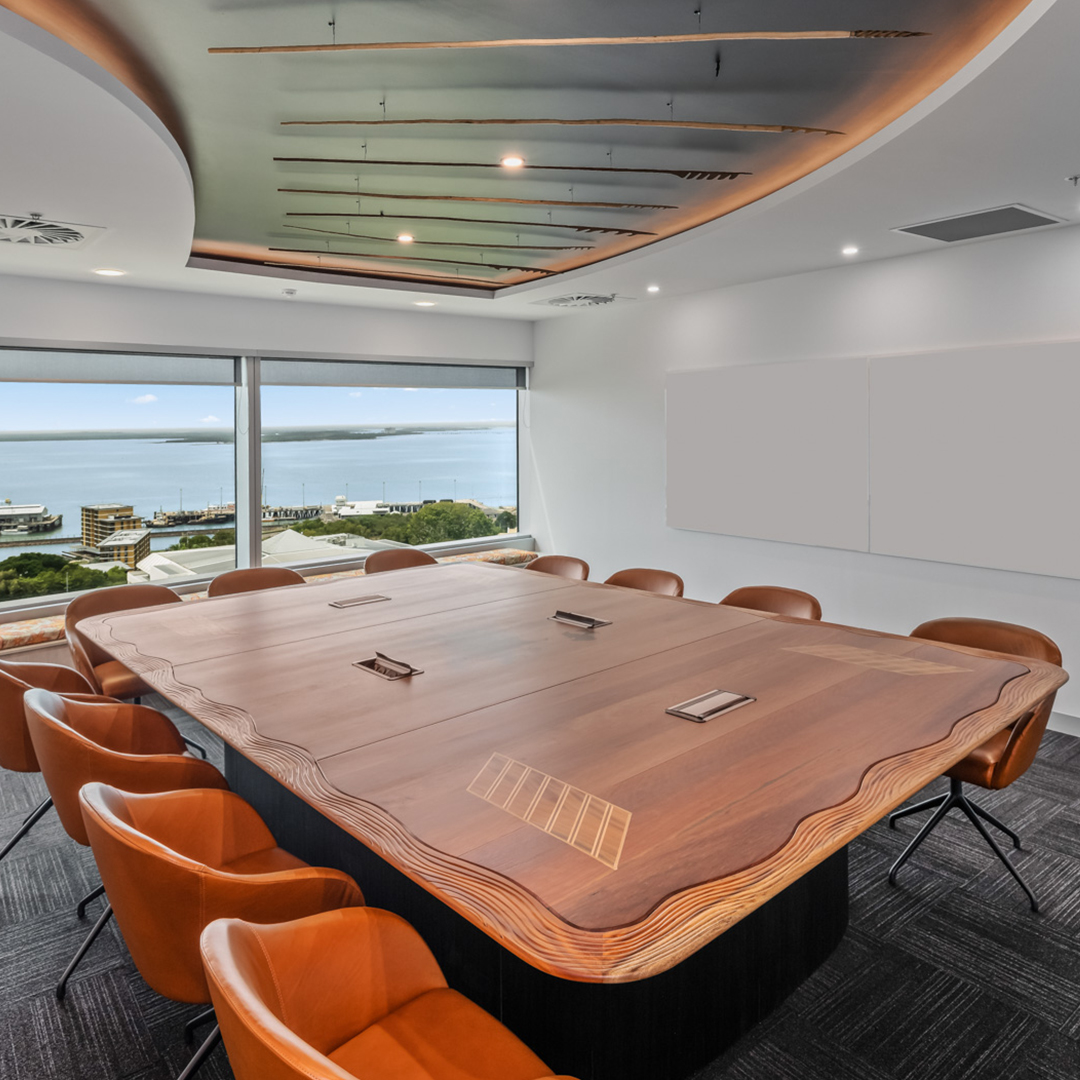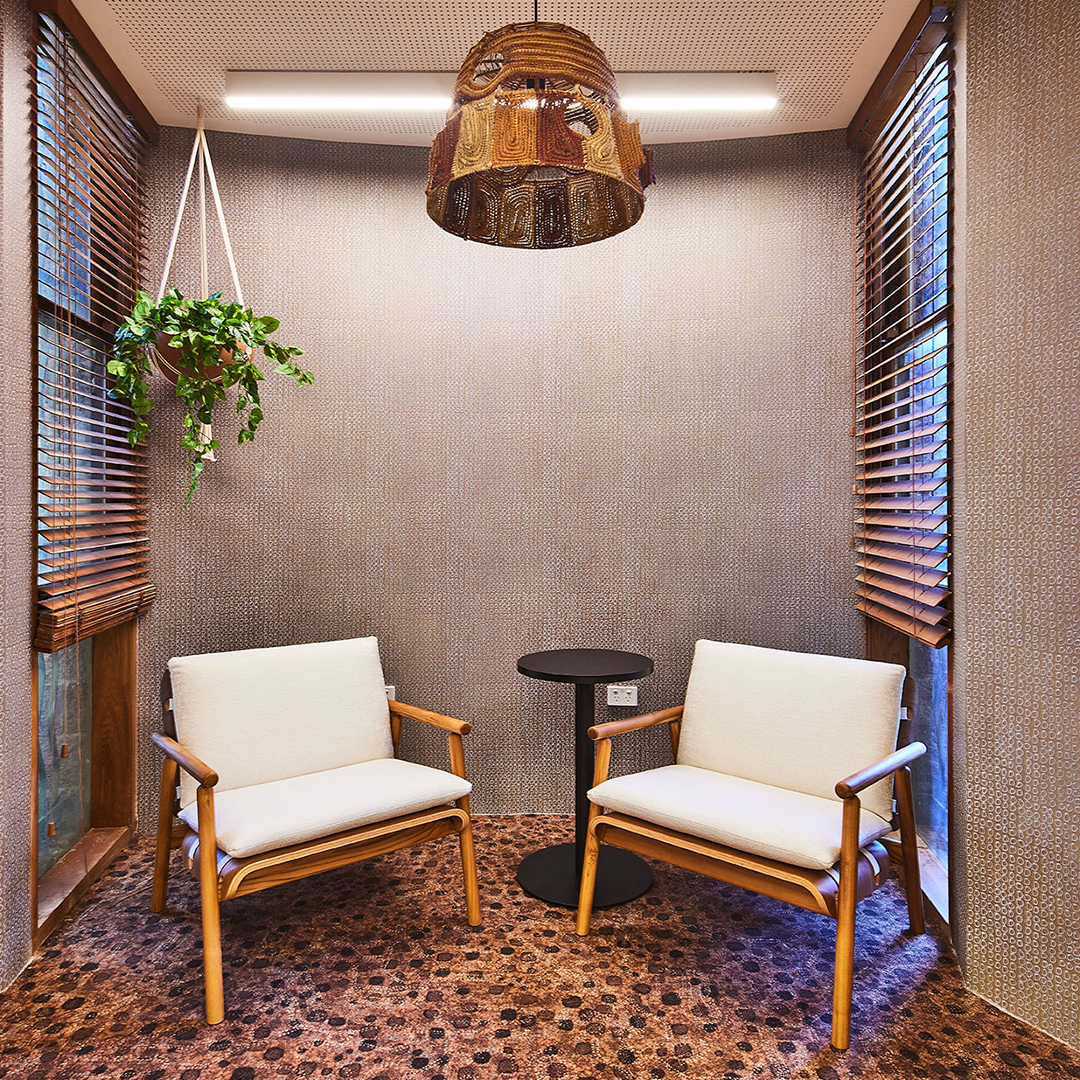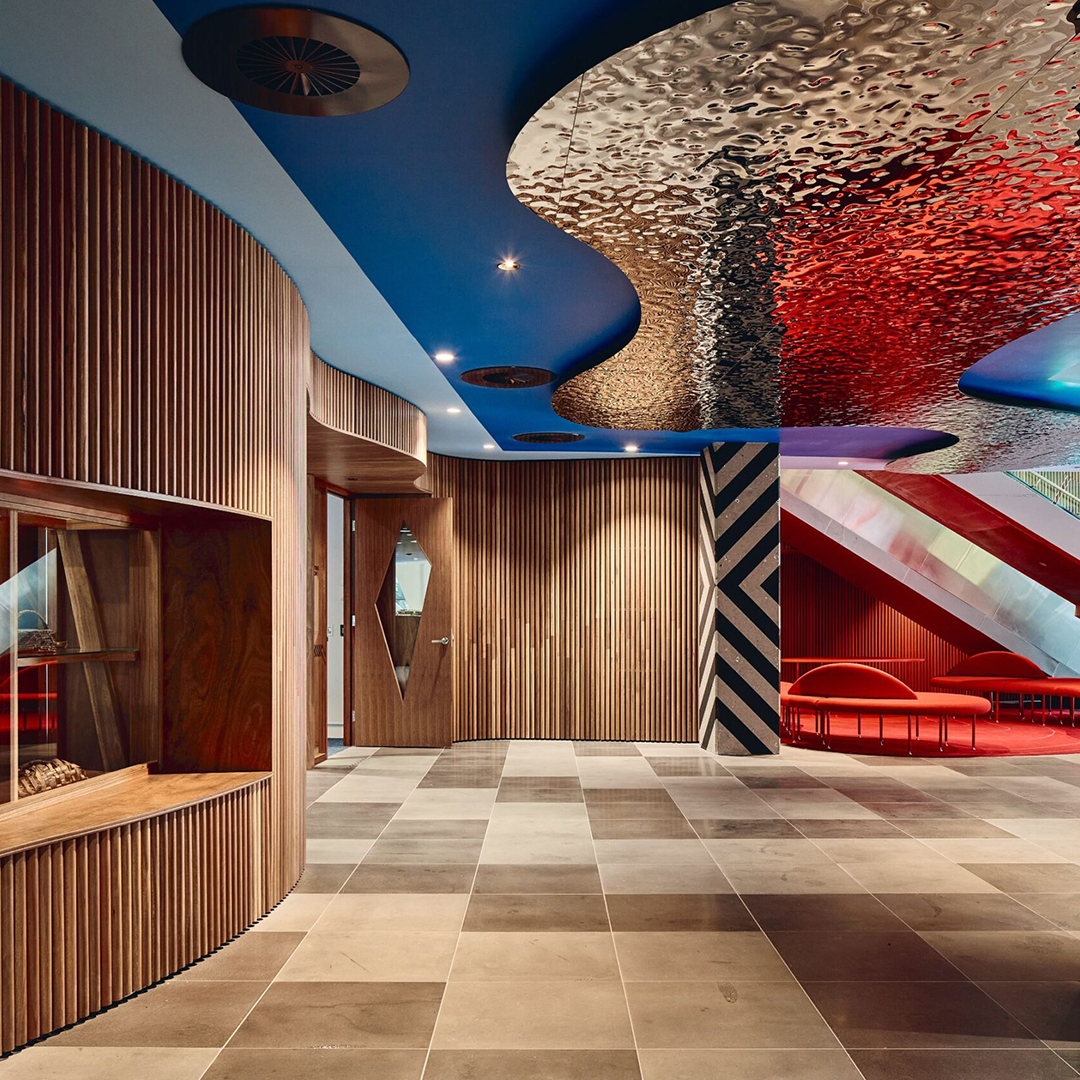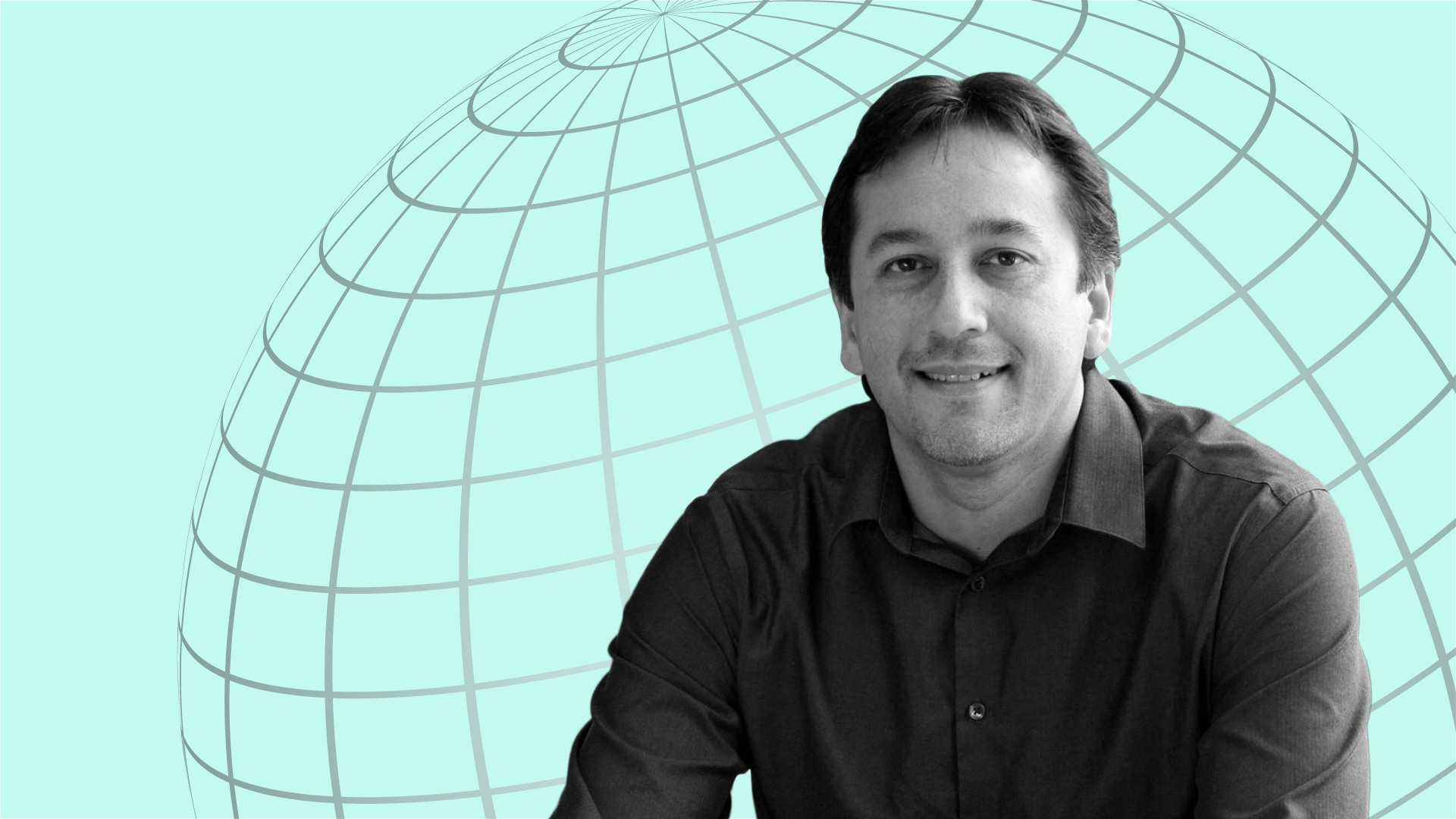
Growing up in New South Wales in the 1970s was tough for Michael Manikas, who has both Aboriginal and Greek heritage. His father, a first-generation immigrant to Australia, was a proud new Australian who would often get discriminated against for being European, and his Aboriginal Australian mother grew up in an era of fear due to policies made against the country’s First Nations people.
Manikas, too, was the victim of racial discrimination, often picked on by children who were considered new Australians when compared to his ancient Australian Aboriginal heritage.
“My mum was from the Stolen Generations era,” he says, referencing the systematic removal by successive governments of Aboriginal and Torres Straits Islander children from their families, a practice that continued until 1969 just a few years before he was born. “For people of her age, it was very much ‘keep your head down and try to blend in as much as possible’. We knew about our Aboriginal descent, we spent a lot of time up-country with mum’s family, but our Greek side was more accepted at the time.”
Manikas is a proud Worimi and Biripi descendant, both tribes whose traditional homelands were a couple of hundred miles north of Sydney. His mother was a Cook on her mother’s side, a prominent Aboriginal family based in Gloucester in the heart of the Worimi–Biripi area, and a Clarke from her paternal side, and one of 16 siblings. He counts sports professionals, soldiers and Gordon Syron – a well-known contemporary artist – among his relatives, but no building professionals. So, for the past 30 years, he has made it his mission to encourage more First Nations people into the construction sector.
“I can say with some confidence and sadness that I am the only FRICS Aboriginal quantity surveyor in the world,” he says. “I’d love to see more representation in this sector – it's a great industry, there are huge opportunities. I’d love to get the numbers of Indigenous people up.”
Having spent much of his early career campaigning for better environmental sustainability within construction, he now works for DLG Shape. It’s a company founded by David Liddiard, a part Biripi, part Ngarabal man (and a former rugby league pro who played for several Australian and English clubs), which is “committed to improving the lives of Australia’s First Nations”. This it achieves by actively engaging with Aboriginal and Torres Straits Islander people, recruiting from these communities wherever possible.
This is undoubtedly laudable, but Manikas is keen to point out that it’s no mere act of charity. Indigenous people have huge potential but have been discriminated against quite nakedly since settlers first took over their lands meaning that, for most of the past 250 years, they have been denied access to opportunities. Until the 1960s, a series of so-called “protection” laws meant that they lacked even basic rights – Manikas recalls his grandparents’ generation had to disavow their Indigenous languages, culture and families in order to have freedom of movement or the right to acquire wealth or an education.
Consequently, Australia’s First Nations people are often seen through the lens of their disadvantages, which can be a double-edged sword. It helps people to understand the enormity of the challenges that many face but it can also mean that that’s the only conversation that is had, and the situation is regarded as hopeless.
Nevertheless, it is worth acknowledging that on all the indices of social and economic deprivation, Aboriginal and Torres Straits Islander people score disproportionately high compared with the non-Indigenous population: there is significantly lower life expectancy (about a nine-year difference for Aboriginal men) and higher infant mortality (more than double). Suicide rates within the Aboriginal and Torres Straits Islander population are coming down but are 3.3 times the rate of non-Indigenous Australians; incarceration rates remain stubbornly high (one in 22 Aboriginal or Torres Straits Islander men is imprisoned, 17 times the rate of non-Indigenous incarceration). Educational attainment is, on average, very low – Manikas says that at one Aboriginal-majority school he visited, the attendance rate was about 15% – while substance and alcohol abuse is an ongoing issue within Aboriginal communities. The Aboriginal pay gap in 2021 was AUD$316 per week (£164).

Anindilyakwa Land Council Fitout

Tranby Story Keeping Place Fitout

Koorie Heritage Trust Building Expansion
“We’re a creative bunch and our whole culture is about how we care for the land and make shelter” Michael Manikas FRICS, DLG Shape
“When I worked in the Green Building Council, I saw their policies starting to thrive. It made me think there must be a way to create more opportunity for Indigenous people,” he says.
While there are record numbers of First Nations people now studying at university level – thanks in part to diversity programmes, scholarships and funding arrangements – many undergraduates are drawn to the fields of health and law, perhaps as a result of how poorly their communities fare in both these areas. Manikas has a spreadsheet that gives the 2020 figures for Aboriginal and Torres Strait Islanders commencing university: more than 5,500 have chosen health and law compared with just 114 entering architecture, and building makes up only 0.02% of the entire discipline’s intake. “I’d argue that housing is as big an issue in Australia as health and law,” says Manikas a little sadly. “I think there is real value to becoming involved – I'd love to get numbers in the built environment up to those other sectors.”
Yet the opportunities to succeed in the built environment are very real, in part due to an Australian government initiative – the Indigenous Procurement Policy (IPP) – which, since 2015, has encouraged First Nations-owned businesses to tender for federal or regional government building contracts. The Department of Defence, with its many army bases scattered throughout the country, has been a particularly rich source of work, especially for Aboriginal-owned businesses in isolated areas away from Australia’s coast. Although the highest number of Aboriginal people are found in Sydney and its satellite towns, it is remote areas of the outback where Indigenous people make up a higher proportion of the population.
All this means that the IPP has been a huge success, right? Well, yes, but it could be argued it’s been too successful – Manikas says that there are up to 10 times as many jobs as Aboriginal people looking for work in the construction sector. “There’s a really low number of qualified Indigenous people to choose from. We struggle to get the staff, as you can see from the number of people graduating from uni.”
In fact, “blak-cladding” has begun to be an issue. Similar to green-washing (Aboriginal and Torres Strait Islander people sometimes use “blak” as a shorthand for their identity), it refers to businesses that falsify claims that they are majority Indigenous owned and managed, sometimes using an Indigenous person as a frontman. They do this to take advantage of projects they may not be able to deliver as a non-Indigenous business without any direct gain for the Indigenous business owner.
The obvious solution to this is to make sure that there are more First Nations entrepreneurs and professionals. Manikas has worked with programmes such as CareerTrackers, an outreach project that promotes internships and mentorships for young Indigenous people.
“I’ve met some incredible people doing it – one guy managed to get through school and university although his parents and his siblings had lots of drug and alcohol problems. He used to turn up at meetings with a backpack and it contained his whole life because he was homeless at that point.
“In the green building sector, our strategy was about getting stock market-listed companies on board and then we’d see that ethos trickle down as they raised awareness about what could be done. We have seen similar progress in the reconciliation space, with many stock market-listed companies leading the way with social procurement. I’ve been trying to get RICS to create a showcase of the great Indigenous people we have working in Australia, our amazing Indigenous architects and the process of designing and connecting communities using their designs.”
Although there have been predictable complaints about the IPP and perceived preferential treatment of First Nations people in Australia, the evidence of the effectiveness of these measures was spelled out in a report by Supply Nation, a non-profit that verifies Indigenous-owned businesses. It calculated that for every AUD$1 spent with an Indigenous-owned business; the social impact is worth an impressive AUD$4.41.
More than straightforward financial arguments, however, Manikas just really wants to encourage Indigenous people into construction. “We need a 10- or 20-fold increase in Indigenous numbers because we’re starting from such a low base. The thing I’ve loved about this sector is seeing something tangible I’ve been able to play a part in. It’s so satisfying. We’re a creative bunch and our whole culture is about how we care for the land and make shelter.” He smiles. “It just seems such a good fit.”


